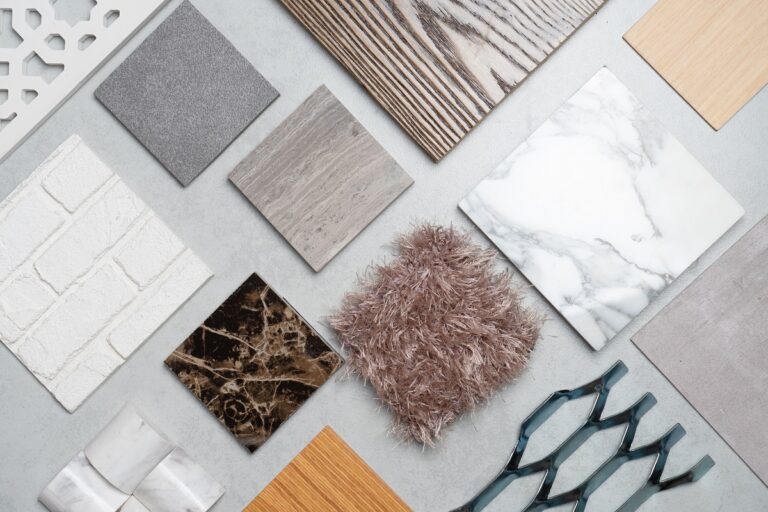Designing a dining room is about more than picking the perfect chandelier or selecting a stylish table, it’s about creating a space that reflects how your client lives, entertains, and connects with others.
Some rooms are made for lively dinner parties, while others are perfect for quiet family meals. Every detail needs to align with function, flow, and personal taste. That’s why it’s essential to start with thoughtful planning.
To support your process, we’ve created two awesome resources: a comprehensive dining room essentials checklist and an interactive questionnaire template. Both are available in printable and digital formats to help guide the project with clarity.
Table of Contents
Dining room essentials checklist
The dining room is where style meets hospitality—whether your client is hosting a candlelit dinner, celebrating holidays, or just enjoying takeout with a little ambiance. As a designer, creating a dining space that’s functional, fabulous, and totally their vibe means covering all the right details. This checklist will help you think through every option, upgrade, and finishing touch that turns a dining room into a destination. 💫
🪑Furniture and layout
- Dining table size and shape: Consider oval, rectangular, round, or square based on room dimensions and seating needs. Don’t forget client habits and plans here.
- Extendable table: Great for clients who entertain but want a smaller everyday footprint.
- Seating style: Upholstered, wood, mix-and-match? Armchairs at the heads? Bench seating?
- Number of chairs: Enough for daily use, with extras for guests.
- Sideboard, buffet, or credenza: Adds storage and a surface for serving.
- Bar cart or drink station: Stylish and functional for entertaining.
- Cabinet or hutch: For storing glassware, china, and serving dishes.
- Table-to-wall clearance: At least 36″ is ideal for comfortable movement.
💡Lighting
- Statement chandelier or pendant: The crown jewel of the dining room!
- Task or accent lighting: Sconces, buffet lamps, or overhead spotlights.
- Dimmer switch: Absolute must-have for mood control.
- Candlelight or lanterns: For intimate ambiance and visual warmth.
🎨Surfaces and finishes
- Wall treatments: Think wallpaper, panel molding, wainscoting, or bold paint.
- Ceiling treatments: Try beams, coffered ceilings, or even a painted ceiling for drama.
- Flooring: Hardwood, tile, or luxury vinyl—rugs help soften and define.
- Area rug: Anchors the space. Make sure it’s large enough to accommodate pulled-out chairs.
- Tabletop materials: Wood, glass, marble, stone, or mixed media.
- Furniture finish: Matching set or curated blend of styles?
🖼️Art and decor
- Statement artwork: A bold piece above the buffet or an elegant gallery wall.
- Mirrors: Great for small or dark rooms—bounce light and expand space.
- Shelves or floating ledges: For layered vignettes or rotating decor.
- Centerpieces: Fresh flowers, sculptural objects, or low-profile candles.
- Table linens: Tablecloths, runners, placemats, and cloth napkins.
🍽️Tabletop must-haves
- Dinnerware: Everyday and special occasion sets.
- Glassware: Water, wine, and specialty glasses.
- Flatware: Modern, classic, gold-toned, matte black—oh yes!
- Serving pieces: Platters, bowls, and trays.
- Pitchers and carafes: Elegant and handy.
- Charger plates: For a dressed-up setting.
🌿Comfort and vibe
- Window treatments: Drapes, roman shades, or sheers for light control and softness.
- Cushions and chair pads: Add color and cozy vibes.
- Plants or greenery: Potted centerpiece, hanging vines, or a tall corner plant.
- Scented elements: A subtle diffuser or seasonal candles. These can help disguise kitchen orders and contribute to a more layered sensory experience.
- Ambient sounds: Consider a discreet Bluetooth speaker or built-in system.
🧠Smart design extras
- Storage for linens and tabletop goods: Concealed or display storage options.
- Built-in buffet or cabinetry: A seamless way to add style and function.
- Charging drawer or hidden outlet: For dinner parties with playlists or presentations.
- Zoned lighting options: Layers of light for every occasion.
🧺For the entertainers
- Wine storage: Wall racks, wine fridges, or cellar access.
- Serving carts or trays: For easy hosting and effortless elegance.
- Entertainment accessories: Ice buckets, coasters, cocktail napkins, and seasonal serveware.
- Seasonal switch-ups: Space for storing holiday decor and rotating accents.
🖋️Personalization and flair
- Signature style: Does the room reflect the client’s taste—bold, refined, relaxed, glamorous?
- Color palette: Cohesive with the rest of the home? Does it pop or soothe?
- Sentimental or heirloom pieces: Family china, vintage barware, or handmade art.
- Conversation starters: Sculptures, books, or quirky finds.
Interactive dining room questionnaire
Download Our
Free Dining Room Questionnaire
- Understand exactly how clients entertain and gather
- Avoid awkward layouts and redesign headaches later
- Build trust and get approvals faster
- Create spaces that feel welcoming, not staged

Where interior designers
come to get organized
A generic checklist offers a great starting point, but it won’t help you deliver the transformation your clients really want. Every client is unique, and so is every dining room project. Whether you’re designing for weeknight dinners, lavish holiday spreads, or cozy wine nights, your success starts with understanding your client’s lifestyle, tastes, and goals.
Instead of chasing down details in back-and-forth emails, this gives you everything up front.
That’s where our interactive dining room questionnaire comes in. It’s a carefully crafted, client-friendly template that helps you gather all the right info up front.
What’s inside
Our questionnaire strikes the perfect balance between practical details and creative vision. Because in dining rooms, the little things—like seating flow, lighting mood, and even dish storage—can make or break the space. The questionnaire is clear, conversational, and totally tailored to help you get to know your client’s space and style.
The questionnaire covers:
- General project info
- Function and logistics
- Lifestyle and entertaining
- Budget and investment
- Style and aesthetics
- Art and color choices
- Visual inspiration
- Extras and personalization
How to use the questionnaire
You can send this as part of your digital welcome kit, embed it into your website, or print it out for in-person consultations. It’s ideal for guiding discovery calls, aligning on expectations, and making sure every dining room you design reflects the client’s vision and your expertise.
You might also want to check out this blog post for an interior design questionnaire that will work for any type of project. And don’t miss our interior design process checklist here.
To get all of the professional design tools and resources you need in one place, start a free trial of DesignFiles.


